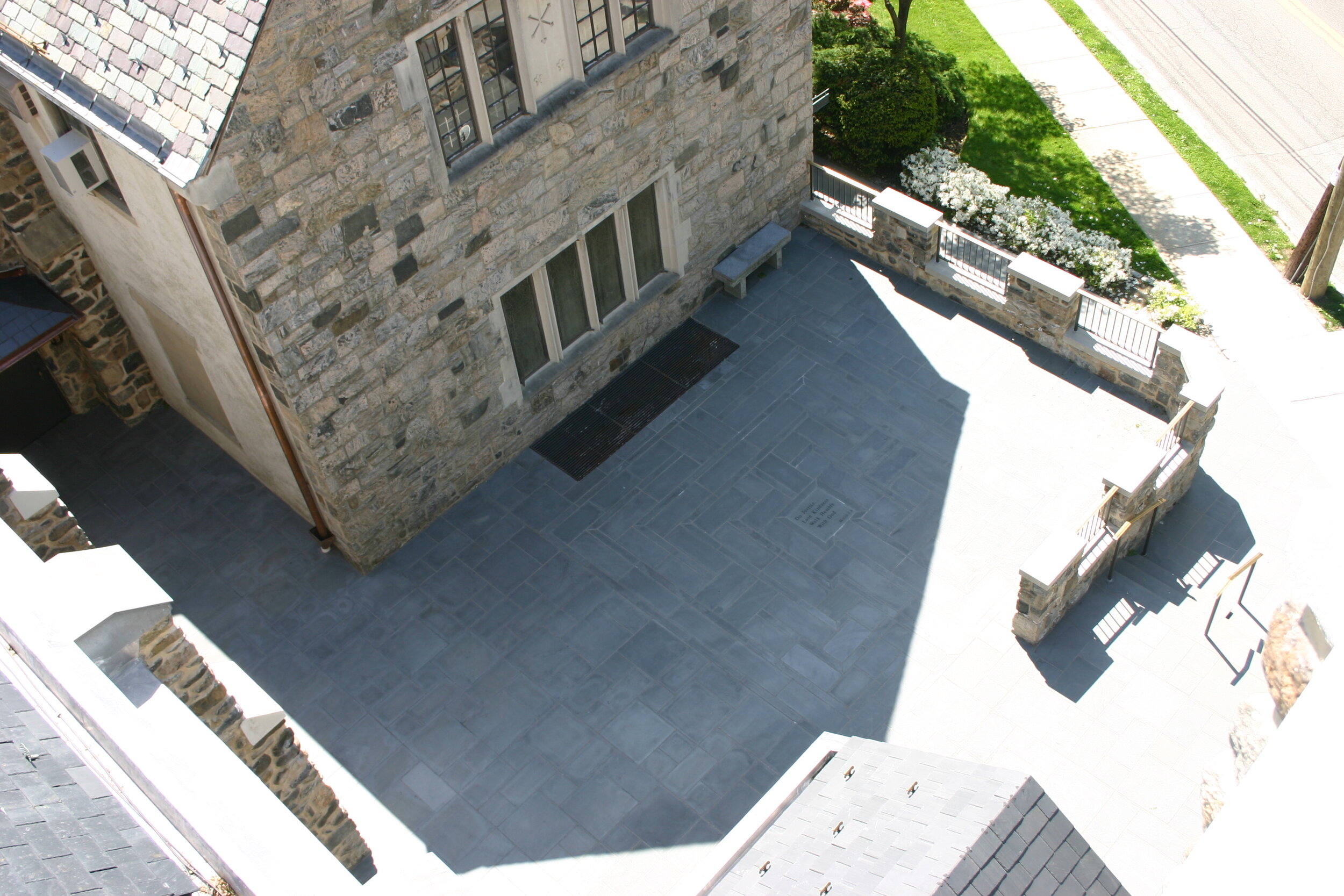
OUR LABYRINTH
The Labyrinth at Hitchcock Church was completed in April 2012. It is located on the patio outside of the main sanctuary entrance doors on Greenacres Avenue. It is constructed of the same stone used on the rest of the patio so as not to be intrusive. It is 16’ by 16’ square. The path is made of foot-wide (12”) stones, outlined with a 4” border.
WHAT IS A LABYRINTH?
Labyrinth images are found in many cultures. In Christian usage, a labyrinth was constructed in stone in the floor of Chartres cathedral near Paris, around the year 1200 CE. Labyrinths are found in many Gothic cathedrals.
Walking a labyrinth is an ancient practice used by many different faiths for spiritual centering, contemplation and prayer. Entering the serpentine path of a labyrinth, the walker walks slowly while quieting their mind and focusing on a spiritual question or prayer.
A labyrinth is not a maze. It has only one path to the center and back out, which is the meaning of the term unicursal (one line). It has no blind alleys or dead ends. The path twists and turns back on itself many times before reaching the center. Once at the center, there is only one way back out. In this way, it symbolizes a journey to a predetermined destination (such as a pilgrimage to a holy site), or the journey through life from birth to spiritual awakening to death.
HOW TO WALK A LABYRINTH
There is no set ritual for walking a labyrinth. The simplest advice is to enter the labyrinth slowly, calming and clearing your mind. This may be done by repeating a prayer. Open your senses and focus on the process of taking slow and deliberate steps. Bring to mind a prayer or spiritual question to contemplate during the walk to the center. Reaching the center, pause to reflect, pray, listen for an answer or for deeper revelation. Now begin the return journey. Pray or reflect further. Upon exiting, use further reflection, prayer, or journaling to absorb the experience.



